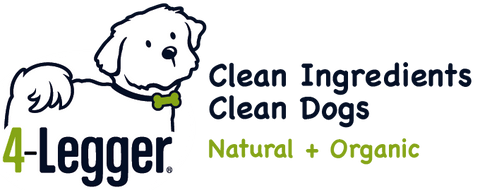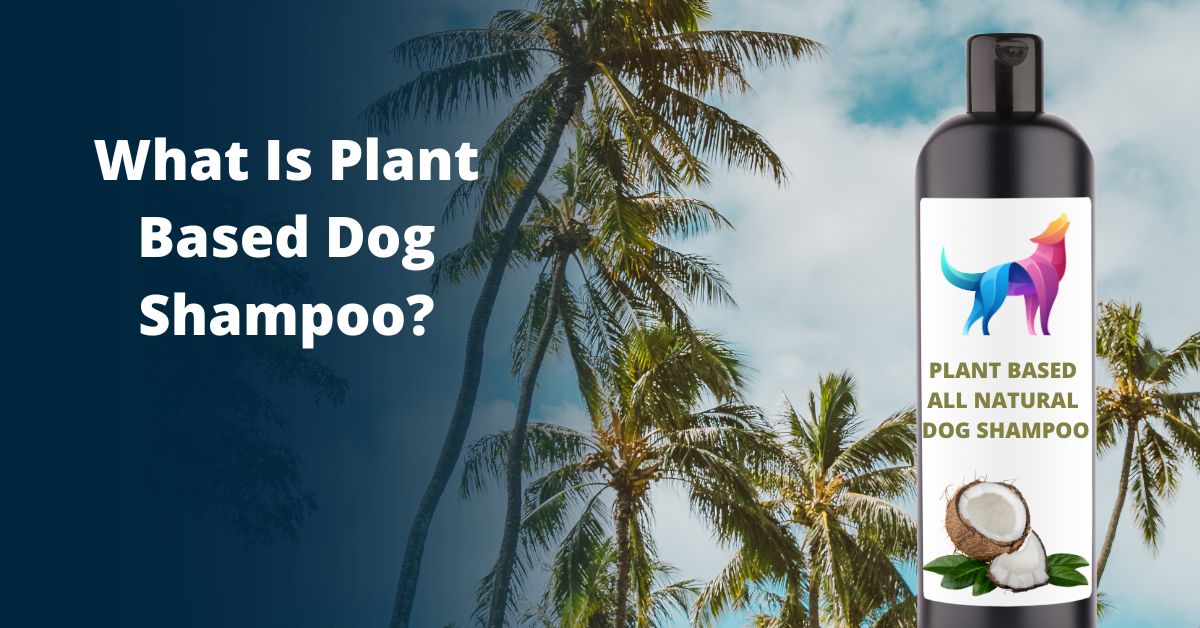What Does Plant Based Dog Shampoo Mean?
My first thought was, "Why state the obvious? It is oat milk. Made from oats! Of course it is plant based."
I started to really think about the ingredients in my oat milk (98% oat milk with vitamins, gums, and other things to make it stay in solution).
Then, like I always do, I related it to plant based dog shampoo.
A lot of manufacturers are using the phrase plant based dog shampoo these days to sell their product. What does it mean?
My oat milk is 98% oat milk. It makes sense for it to say plant based.
But what about dog shampoo?
What Is Plant Based Dog Shampoo?
“Plant-based dog shampoo” is a marketing phrase that is used to sway the consumer to purchase a product by making you think the ingredients are as close to being real plants as possible.
‘All natural dog shampoo” is another marketing phrase that is used a lot to greenwash a product - which means to make it sound like the product is all natural so you'll be convinced it is the best product on the market for your furry family member.
Who would buy a bottle of shampoo that said, "Synthetic Ingredient Dog Shampoo".
Dog Shampoo Made with Real Plants
In the case of 4-Legger organic dog shampoo, we say, "made with real plants".
The coconut in our coconut oil dog shampoo is harvested from a single source USDA Certified Organic farm and the coconut oil is extracted without any chemicals. The coconut is cut and pressed to extract the coconut oil.
We take the coconut oil and saponify it to convert the oils and fats in the coconut oil into a cleanser. It is a single chemical reaction. That is it. It is truly plant based and when it goes into the bottle it still resembles the original plant.
What Chemicals Are In Plant Based Dog Shampoo
I went to Google and typed in "plant based dog shampoo". Mind you, Google is not the best place to do research but I know that’s where most people search, so I wanted to see what they would find.
Here are the ingredients in the first product that popped up in my Google search:
Water (Aqua), Sodium Methyl-2 Sulfolaurate, Disodium 2-Sulfolaurate, Cetyl Betaine, Cocamidopropylamine Oxide, Guar Hydroxypropyltrimonium Chloride, Gluconolactone, Aloe Barbadensis Leaf Juice (Aloe), Sodium Benzoate, Citrus Reticulata (Tangerine) Oil , Lauryl Lactyl Lactate, Glycerin, Linum Usitatissimum (Flaxseed), Tocopherol (Vitamin E)
Typically in the list of ingredients, the ingredients are listed in order based on highest to lowest amounts.
How Sodium Methyl-2 Sulfolaurate Is Made
The first ingredient in that so called natural dog shampoo after water is Sodium Methyl-2 Sulfolaurate.
So... let's see how this one chemical is made:
Sodium Methyl-2 Sulfolaurate is made from lauric acid so we must first isolate that ingredient.
-
Coconut Oil Extraction: Coconut oil is extracted from the meat (copra) of mature coconuts. The extraction process typically involves crushing the coconut meat to obtain coconut milk. This milk is then subjected to various separation methods, such as centrifugation or pressing to separate the oil from the water and solids.
-
Saponification and Hydrolysis: After obtaining coconut oil, it may undergo saponification and hydrolysis reactions to break down the triglycerides (fats) in the oil into their constituent fatty acids and glycerol. These reactions involve treating the coconut oil with an alkali (such as sodium hydroxide) and water, leading to the separation of fatty acids from glycerol.
-
Distillation or Fractionation: The mixture of fatty acids obtained from the saponification and hydrolysis process is often subjected to further separation through distillation or fractionation. These techniques take advantage of the different melting points of various fatty acids, including lauric acid. Fractionation separates fatty acids based on their chain lengths, allowing for the isolation of lauric acid-rich fractions.
-
Lauric Acid Crystallization and Purification: The lauric acid-rich fraction obtained from fractionation is cooled, causing lauric acid to crystallize due to its higher melting point. These crystals can then be separated from the liquid phase, further purifying the lauric acid.
-
Further Refining: The obtained lauric acid crystals may undergo additional refining processes to improve their purity and remove any remaining impurities or unwanted compounds. These refining steps can include techniques such as filtration, washing, and recrystallization.
-
Drying and Packaging: The purified lauric acid crystals are usually dried to remove any residual moisture. Once dried, the lauric acid is packaged and ready to use to make Sodium Methyl-2 Sulfolaurate.
-
Sulfonation: Sulfonation is the key step in the synthesis of Sodium Methyl-2-Sulfolaurate. In this step, lauric acid is reacted with sulfamic acid (or a derivative) in the presence of a suitable solvent and a catalyst. This leads to the formation of a sulfonic acid group on the carbon chain.
-
Esterification: After sulfonation, the product is then esterified with methanol, resulting in the formation of the methyl ester of the sulfonated lauric acid. This is done by reacting the sulfonated lauric acid with methanol in the presence of a catalyst, typically an acid catalyst.
-
Neutralization and Salt Formation: The resulting methyl ester of sulfonated lauric acid is then neutralized with sodium hydroxide (NaOH) to form the corresponding sodium salt. This sodium salt is the Sodium Methyl-2-Sulfolaurate compound.
-
Purification and Processing: The final product SHOULD be subjected to purification steps to remove any impurities and unreacted starting materials. Filtration, centrifugation, and other separation techniques might be used for this purpose. Unfortunately, studies have shown that this step is often not done in human products because it is an additional cost. This is why many products are contaminated with by-product ingredients used in the manufacturing process.
There you have it... we finally have the first ingredient in this dog shampoo - sodium methyl-2 sulfolaurate.
I think anyone would agree that while this ingredient started out as a coconut it no longer resembles a coconut in any way.
While my oat milk was 98% oat milk, I don't think anyone would say the dog shampoo in this examlpe is plant based after undergoing so many chemical reactions - and that is with just one of the ingredients - not taking into consideration the other chemicals used to make that ingredient or the other ingredients in that dog shampoo!
Buyer Beware When Shopping for Plant Based Dog Shampoo
4-Legger sets itself apart from the competition through its unwavering commitment to quality and transparency.
Unlike other brands that often rely on gimmick marketing and deceptive claims, 4-Legger shines by embracing a genuine approach rooted in honesty and integrity.
When we say “all natural dog shampoo” it is truly all natural.
When we say “organic dog shampoo”, it is because our products are certified to organic food standards through the National Organic Program.
What truly elevates 4-Legger is its dedication to using ingredients sourced directly from real plants, ensuring that every wash is a nourishing and truly safe experience for our canine companions.
4-Legger's emphasis on transparency means pet owners can trust the products they're using, with no hidden additives or misleading information. In an industry where authenticity can be rare, 4-Legger leads by example, demonstrating that when it comes to our furry friends, honesty and natural goodness are the keys to healthier and happier baths.





